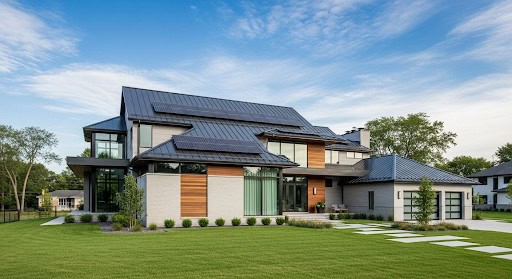Understanding the importance of safes is vital in today’s world. Safes offer indispensable protection for valuable items and essential documents against theft, fire, and other hazards. In the world of both home and business security, the demand for high-quality safes has seen a significant rise. Keeping valuables safe is not just a matter of convenience but a necessity in safeguarding against unforeseen events.
This guide explores fire-resistant safes, detailing their ratings, materials, and key features for fire protection. We’ll also examine burglar-resistant safes, focusing on security features, locks, and construction. For those seeking discreet storage, wall and floor safes offer unique benefits and require careful installation. Gun safes come with specific safety standards and size options essential for secure firearm storage. Lastly, high-security safes, with their advanced locking systems and robust construction, cater to safeguarding extremely valuable or sensitive items.
Fire-Resistant Safes
Fire-resistant safes stand as an indispensable defense against the destructive force of flames and high temperatures. These safes are designed to ensure that their contents remain unharmed even in the throes of a fire emergency. Different ratings, like those from UL (Underwriters Laboratories), indicate how long the safe can withstand extreme heat — usually ranging from half an hour to several hours.
Materials such as steel and concrete composites are commonly used in construction, giving these safes both durability and thermal resistance. Additionally, some models come with advanced features like water resistance, tamper-proof hinges, and electronic locks, which enhance their protective capabilities.

Burglar-Resistant Safes
Burglar-resistant safes are meticulously designed to deter and withstand attempts at tampering and forced entry, ensuring your valuables remain secure. When evaluating these safes, consider the various security features that contribute to their robustness. Common components include hardened steel construction, which provides a formidable barrier against tools and brute force.
The locking mechanisms can range from traditional key locks to advanced electronic keypad systems, each offering varying levels of security and ease of access. Features like anti-pry tabs, relocking devices, and drill-resistant plates are essential in thwarting deliberate break-in attempts. Construction quality is another vital aspect; look for safes that comply with recognized standards or certifications, which guarantee a certain level of resilience.
Wall and Floor Safes
Wall and floor safes are optimal for those seeking discreet storage options, as they can be built into the very structure of your home or business. These hidden safes offer a unique combination of security and camouflage, making them difficult for thieves to find and access. When deciding on a wall or floor safe, consider the benefits, such as their concealed nature and ability to blend seamlessly with your surroundings.
However, installation requires careful planning, often needing professional assistance to ensure they are securely and properly integrated into walls or floors without compromising structural integrity. Additionally, best practices for utilizing these safes include proper positioning—preferably in low-traffic areas—and ensuring they are occasionally checked and maintained for best functionality.
Gun Safes
Gun safes serve a vital role in storing firearms securely, keeping them out of the wrong hands, and ensuring compliance with legal mandates. When selecting a gun safe, several key features come into play. Look for robust construction materials, such as heavy-duty steel, which provide a sturdy barrier against unauthorized access. Safety standards, including certifications like UL ratings or California DOJ approval, indicate that the safe meets stringent security benchmarks.
Size options vary widely, from compact models suitable for handguns to larger safes that can accommodate rifles and other firearms, allowing you to select one that best fits your needs and space constraints. Additionally, advanced locking mechanisms, such as biometric scanners or electronic keypads, offer enhanced security while ensuring quick and easy access when needed.
High-Security Safes
High-security safes are designed to provide exceptional protection for items of immense value or sensitivity. These safes stand out due to their advanced locking systems, which often include biometric scanners, multi-level encryption, and time-delay mechanisms. The construction materials used in high-security safes are generally reinforced steel or composite materials, offering ultra-high durability and resistance to drilling, cutting, and explosives.
What’s more, these safes often come with certifications from recognized bodies such as Underwriters Laboratories or the European Certification Body, assuring their reliability and security standards. The elaborate design features, along with rigorous testing, set high-security safes apart from standard models, ensuring maximum security for your most precious possessions.
Safes play a vital role in protecting valuables, firearms, and sensitive documents from theft, fire, and unauthorized access. From fire-resistant safes offering thermal protection to burglar-resistant models designed to prevent break-ins, each type serves a specific purpose. Wall and floor safes provide discreet storage options, while gun safes ensure firearms are securely stored in compliance with safety regulations. High-security safes go a step further, offering top-level protection for highly valuable or sensitive items. By understanding these options, individuals can make informed decisions to safeguard their belongings effectively.






